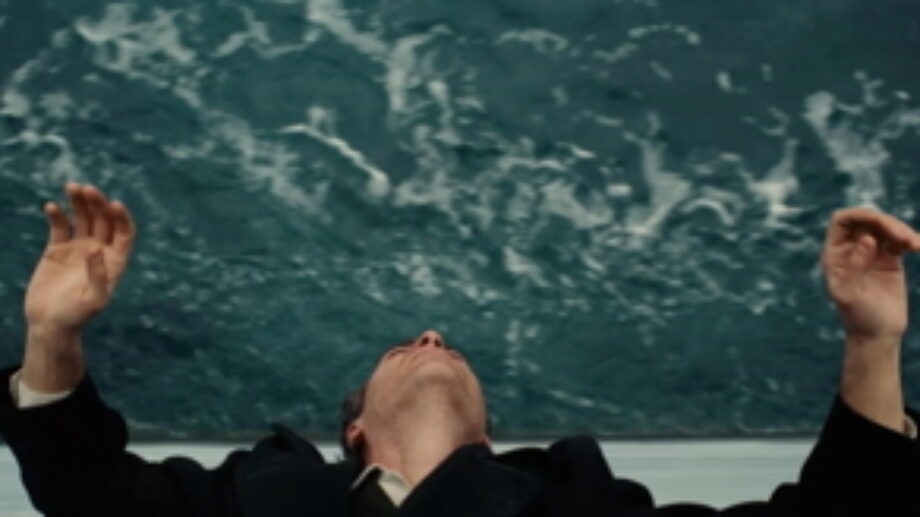
Long before the brilliantly confounding first trailer for The Master arrived last May at the Cannes Film Festival, Paul Thomas Anderson's latest film was the target of much excitement and slight controversy within the film community. Excitement because it was supposedly shot in 65mm, the first feature to do so since 1996, and the return of Joaquin Phoenix after his retirement hoax; the slight controversy came from the rumor that the film was a biopic of L. Ron Hubbard, the founder of Scientology. The inherently mysterious subject matter was matched by the film's promotional approach with secret screenings being held around the country, most of them announced only hours prior to the event with a teaser video secretly released on YouTube. So, when people were frustrated by Anderson's perplexing final product, one must ask: How could they have expected anything else?
One of the most closely followed American filmmakers working today, Anderson's work is very familiar to most film-lovers. From the very beginning of his career, he has demonstrated the confidence of a filmmaker wise beyond his years. Not only has Anderson proven himself a consummate writer, being the mind behind several unforgettable monologues (like Jason Robards Jr.'s drug-induced ramble on regret in Magnolia) and maybe the one and only instant-classic piece of dialogue in 21st century cinema (“I drink your milkshake!”), he is equally respected for his visual virtuosity. Just two months ago, the British Film Institute published a fascinating video essay studying Anderson's use of long-takes through his use of Steadicam.

That same article suggests that over time Anderson has become less and less inclined to be self-reflexive in his style. The Master proves that hypothesis. Outside of one rather flashy shot of a dress saleswoman gliding around a department store, the film is largely focused on the faces of two men. Instead of using 65mm celluloid for its usual purpose, the grandiose, Anderson employs the overwhelming power of the image as an immersive device that allows the viewers not only to time travel as the members of The Cause do, but to be involved in the film's ebb and flow as it lurches back and forth in time in search of deeply buried memories of a perfect past to correct and heal the present imperfect.
With such a distinct concern for the faces and minds on screen, Anderson relies heavily on the performances of his actors to breathe life into the questions he poses in The Master. In keeping with his visual approach, the central performances speak to the enigmatic uncertainty that permeates the film. In his heavily-lauded review for Film Comment, Kent Jones (newly-appointed Director of Programming for the New York Film Festival) wrote: “I don’t think [Paul Thomas Anderson] has ever done a better job of resolving his story, perhaps because he has come to terms with the irresolution within and between his characters.” Two the film's central performances—from Phillip Seymour Hoffman and Joaquin Phoenix—are among the year's best and most interesting in their refusal to directly comment on the characters' immense inner turmoil, even as such pains are so clearly etched on their faces.

Such a lack of explicit feeling and bravado is a marked change in regards to Anderson's films. Not as young a man as he was when he first gained notoriety—his first feature, Hard Eight, was released when he was just 26—Anderson seems less inclined to show how much he knows, instead probing that which he doesn't have as firm a grip on. The film itself is an unanchored ship, navigating unsteady waters and eschewing calm shores as it refuses to grant the viewer the healing answers the characters fail to discover.
Given this disavowal of traditional storytelling, The Master might have a more difficult time during awards season. But such an immense achievement is difficult to deny and its celebration of the power of celluloid is a timely testament. Even so, if it's too late to save celluloid, it's too late. What's more important is The Master itself: a bold, fittingly ambiguous film that moves back and forth with the hazy nostalgia of a dream achieved through the most cinematic means: the supposed healing power in the recollection of sounds and images.
Accolades (so far):
Winner, Venice International Film Festival: Silver Lion for Best Director and Volpi Cup for Best Actor (shared by Philip Seymour Hoffman and Joaquin Phoenix)
Winner of four Los Angeles Film Critics Association Awards including Best Director, Best Actor, and Best Supporting Actress
Nominated, Gotham Awards: Best Feature
Nominated, Golden Globes: Best Actor (Motion Picture Drama), Best Supporting Actor, and Best Supporting Actress
Watch this teaser video released for a secret screening at the Castro Theater in San Francisco:



